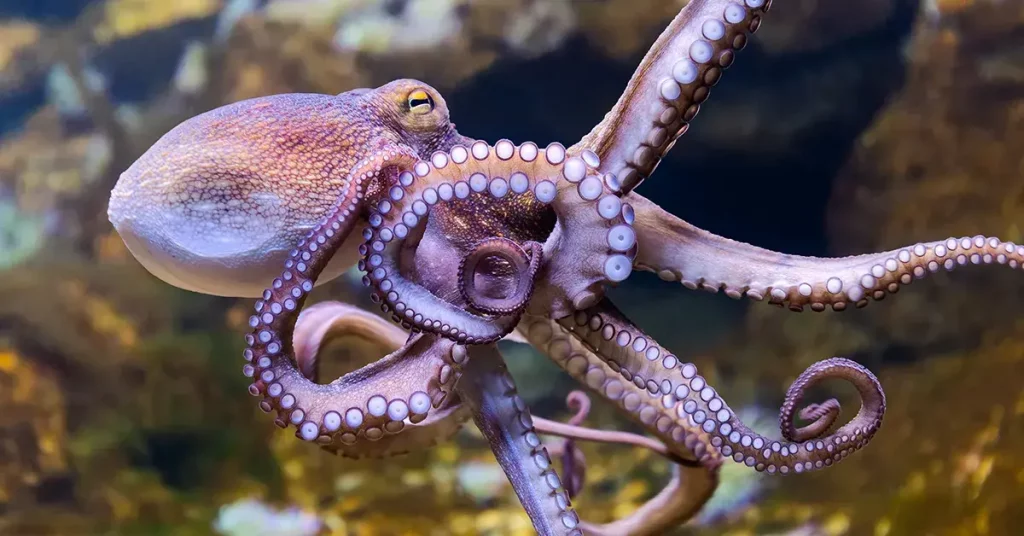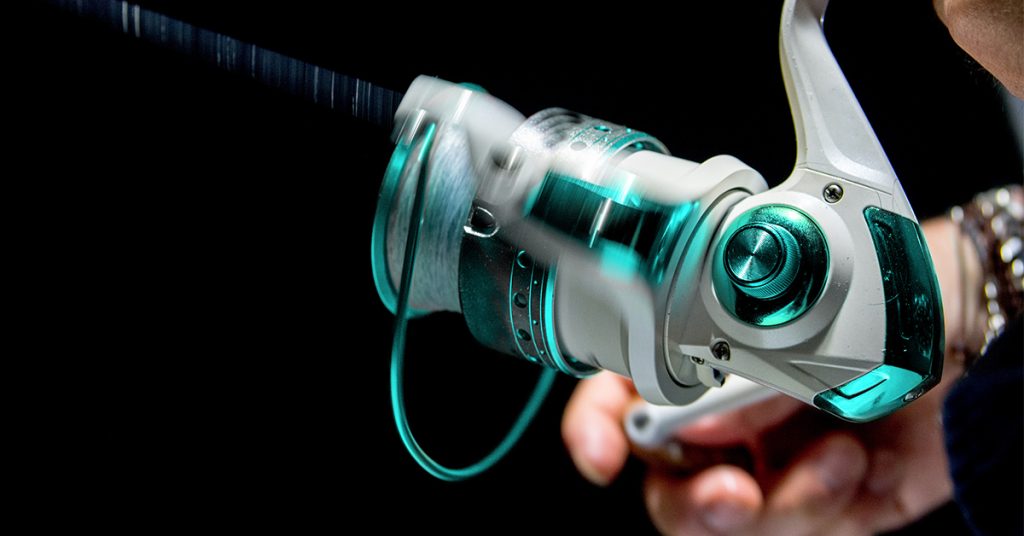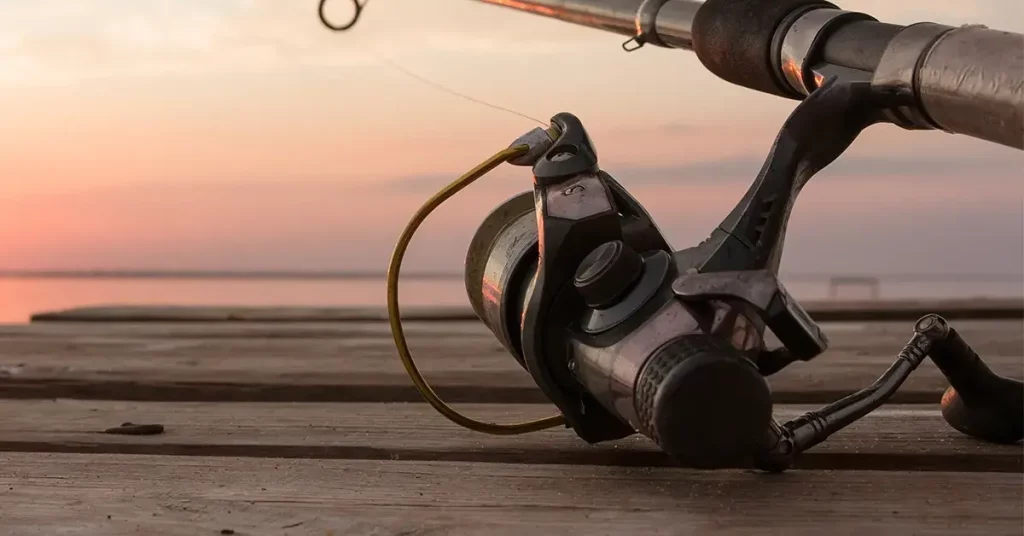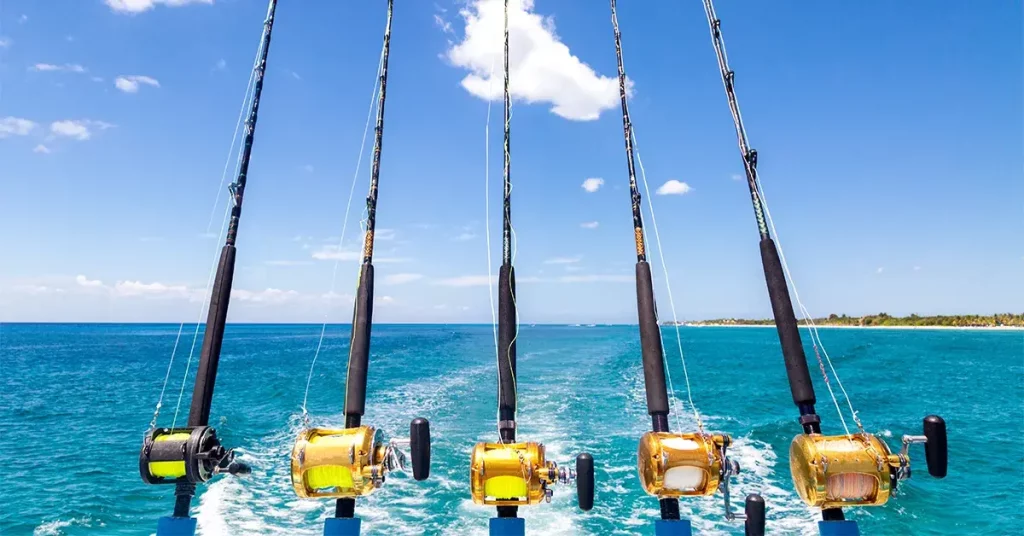Octopuses are a bit of an anomaly when it comes to underwater species. They’re wily, have a handful of tricks they can pull to prevent being caught and can outsmart an unprepared angler. In addition, they’re highly intelligent, have lightning-quick reflexes, and are masters of escape.
That being said, they are possible to catch, and in my book are some of the tastiest seafood on the planet. If you’ve never had fresh grilled octopus, you’re in for an absolute treat.
There are several effective methods you can use to catch octopus, from spearing, to trapping, to rod and reel fishing. Because they’re mollusks, they’re essentially balls of muscle without a skeleton – making them highly challenging to pin down.
Let’s take a look at the different methods of catching octopus in detail, what you’ll need to get started, as well as where to start looking for these wily krakens.
How to Find Octopus?

Before you can start catching an octopus, you’ll need to know where to start looking.
Octopuses are found all over the globe and are a delicacy in the Mediterranean, Japan, Korea, and Hawaii. They live in various regions of the ocean, including reefs, Open Ocean, and on the seabed and are harvested commercially in many regions.
Most octopus species are primarily nocturnal and tend to hunt around dusk. While they’ll eat almost anything, they mostly eat crabs, crayfish, mollusks, and other shellfish. One way to spot an octopus lair is to look for fresh shells without anything growing on them – this can indicate an octopus is in the vicinity. Good lairs can be used my multiple octopuses over the years. So if you find one in one spot, it’s worth checking back at a later date.
They also like to hide under rock ledges, in crevices in rock or coral, under debris, or anywhere they can conceal themselves from predators. They’ll also inhabit abandoned shells of other creatures, car tires, and discarded cans and bottles. This proclivity makes the traditional method of hunting them with plastic or clay pots highly effective.
As many octopus species are actively hunting during the nighttime hours, some fishermen hunt for octopus at night time with underwater torches. If you’re interested in doing this, make sure its legal in your area.
During the daytime, they’re typically hidden inside their lair, guarding the entrance and staying camouflaged and concealed. The only way to spot them at while they’re in this state is to look for their distinct looking eyes.
Before you head out and start catching octopuses, it’s important to make sure you’re following local laws and regulations about size and catch limits.
Spearing/Grabbing Octopus
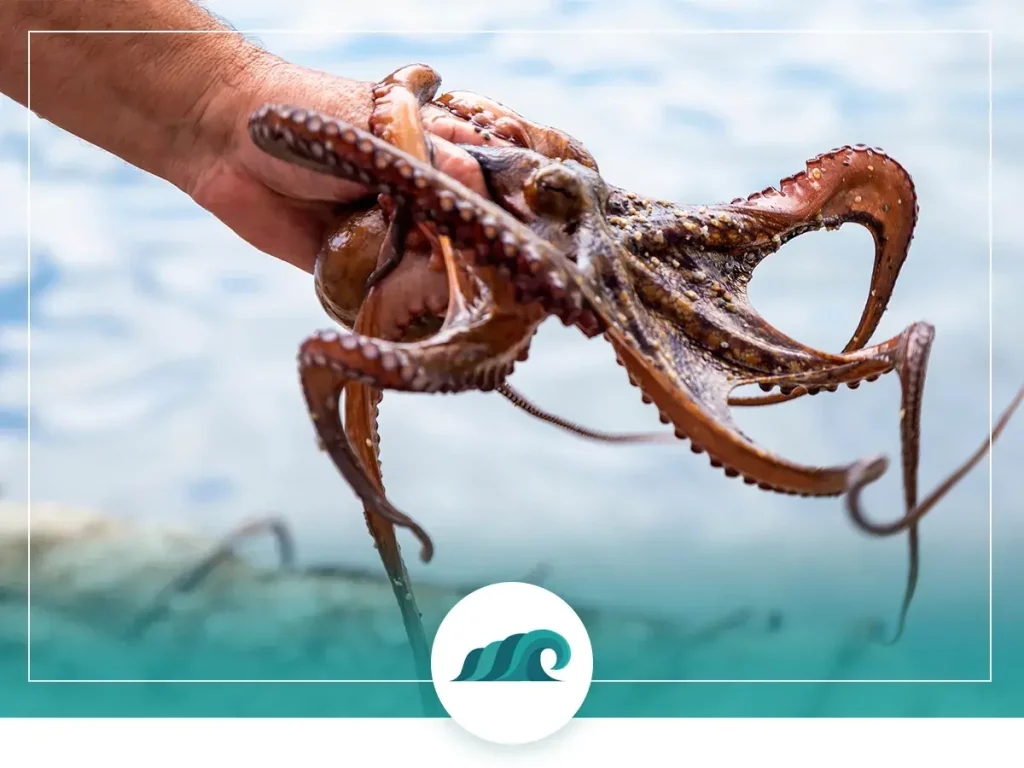
While it’s certainly not for the faint of heart, hunting for octopus using nothing but a spear and your bare hands might be the most rewarding way to catch these incredible animals. You can also catch octopus by grabbing them with your bare hands and a prodding stick, although you should make sure to wear a sturdy pair of gloves to prevent getting a nasty bite!
Before you start diving for octopus, make sure you have a good pair of freediving fins, a mask, and a dive buoy to prevent accidental collisions with nearby boats. You’ll also need some kind of prodding stick if you’re not using a spear.
When grabbing an octopus by hand, you’ll want to fist scout the area and locate the octopus and lair. If it’s inside the lair, you’ll need to prod it by inserting your rod and coaxing it out from its hole. When the opportunity presents itself, grab it by the head, being careful to avoid getting bitten by its beak. Finish it off with a quick stab from your dive knife – aim for right between the eyes.
When fishing with a spear, the method is similar. Instead of trying to grab the octopus by its head, you’ll need to spear it between the eyes. Different types of spears can be used for this, from typical pole spears to old-school trident spears used by Greek divers for generations. The main thing to look for is multiple barbed prongs – this will increase your chances of scoring a solid hit and avoid merely injuring the animal.
Once you’ve finished off the octopus, you’ll need to secure it and keep it close to you, as seals will have a field day with your catch if you leave it unprotected.
Check out this detailed video for a hands-on look at diving for octopus:
Catching Octopus with Pots
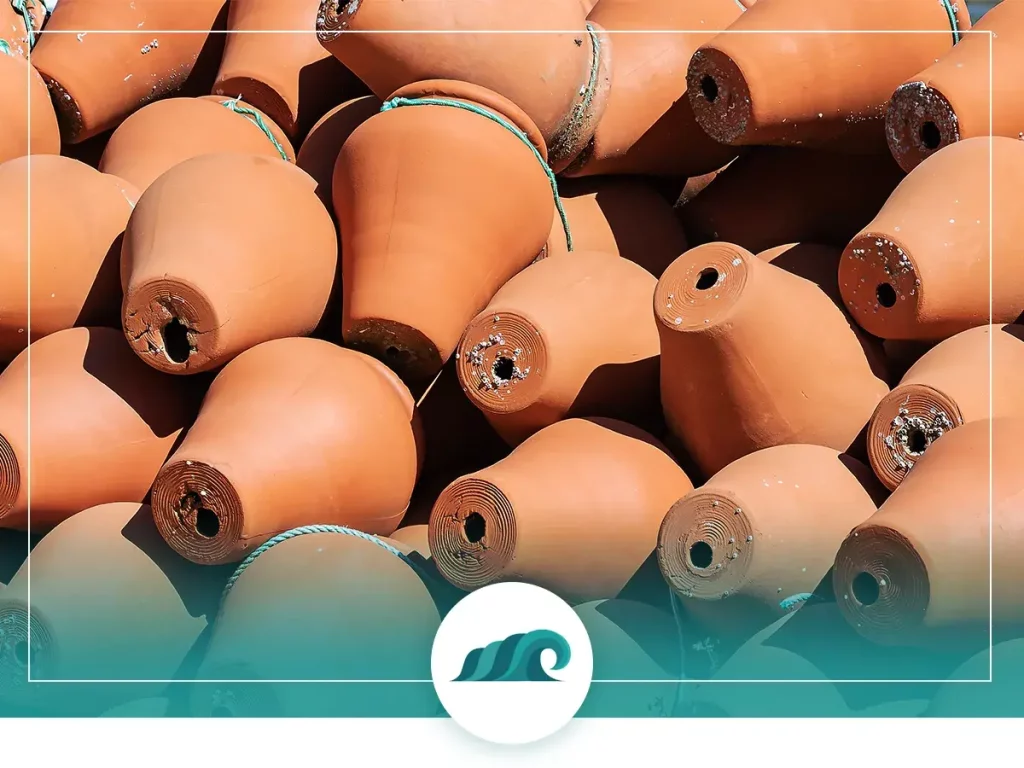
For those who prefer not to get their feet wet, using pots or traps to catch octopus can be an excellent method. It’s a traditional method for catching octopus in many countries and traditionally uses terra cotta pots as fishing receptacles. If you’re interested in taking a look at traditional Japanese octopus fishing, check out this detailed article.
As mentioned previously, octopuses like to inhabit discarded items as dens or lairs, so to an octopus, a pot looks like a brand new luxury home! There’s no need to add bait to the pots, as most octopuses are more interested in the shelter provided by the pot than any food inside it. Some fishermen like to add coins or other shiny objects to their pots, as this can be attractive to curious octopuses.
If you’re fishing from a boat, drop your pots off in regular intervals, and space out the locations as much as possible. Look for reefs and rocky surfaces and make sure to mark the locations with a buoy. If you’re dropping your pots from shore, you probably won’t be able to get them out as deep, but you should still have a good shot of catching something.
Unlike crab traps, octopus pots can take a long time to produce anything. It’s also difficult to spot when you’ve caught one from the surface. You’ll generally want to let them soak for a full day – overnight if possible. Check out this set of well-made octopus pots for a ready-made octopus catching solution.
When you’re checking your traps, make sure to secure any octopus you catch in a secure and tight cooler/container. Octopuses have been known to crawl their way out of loose containers.
Catching Octopus with a Fishing Rod and Reel
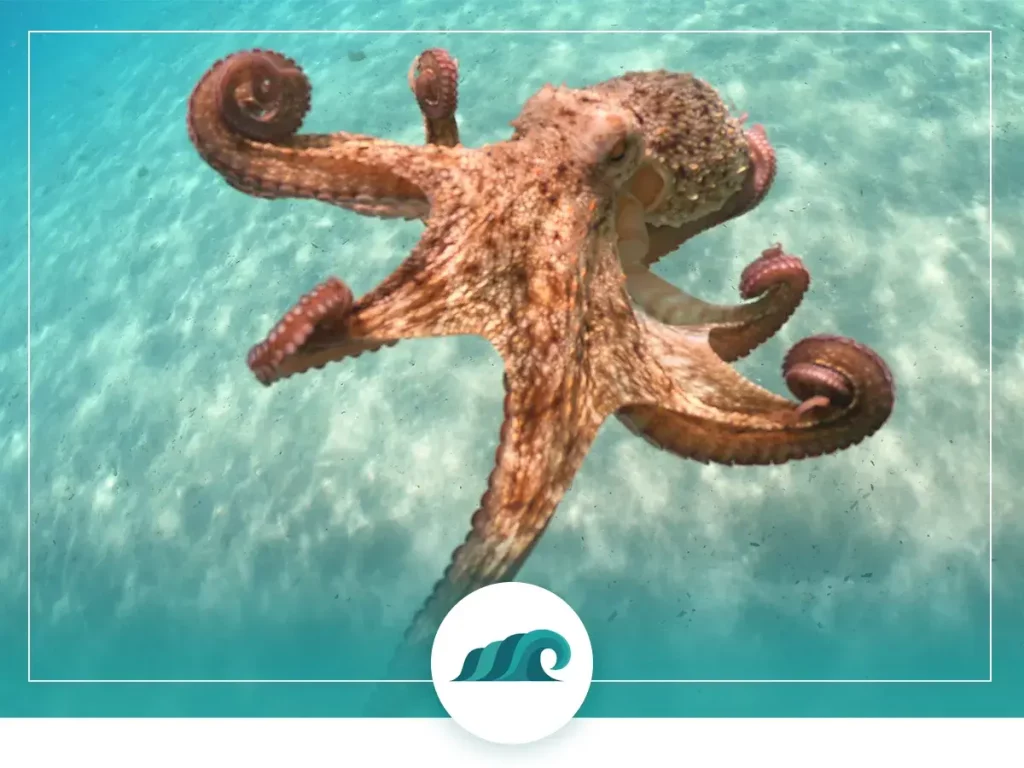
While some people think catching an octopus with a traditional rod and reel isn’t doable, it can be done as long as you’ve got the right gear and technique.
A brightly colored lure will work well to catch the octopus’s eye. Red, white and orange are all good colors to try. You’ll want to make sure the lure stays near the bottom, so add enough weights to keep it from drifting upwards. A large jig with some crab or squid attached can also work well; once again you’ll need to make sure the jig stays near the bottom. Live baited hooks are another option, and can produce excellent results.
Keep the drag low on your rod. When you see some movement in the tip, let out a few feet of line so the octopus can grab hold off it. Your not likely to actually “hook” an octopus – they’ll generally just hand onto your bait – so you’ll want to be gentle when you retrieve. Your retrieve should be slow and steady, as octopus don’t put up much of a fight, and you don’t want to shake one off by jerking your line violently.
Once you’ve got the octopus close by, you’ll need to be a little crafty when getting it out of the water. Octopuses are intelligent, and will often drop your lure/bait once they’re lifted out of water. Use a landing net to scoop them up in the water, and then lift them out. Make sure to do this quickly. Octopus can squeeze through the small openings in your net if you give them enough time.
Check out this video for a look at octopus and cuttlefish rod-and-reel fishing:
What to Do with Octopus After the Catch?
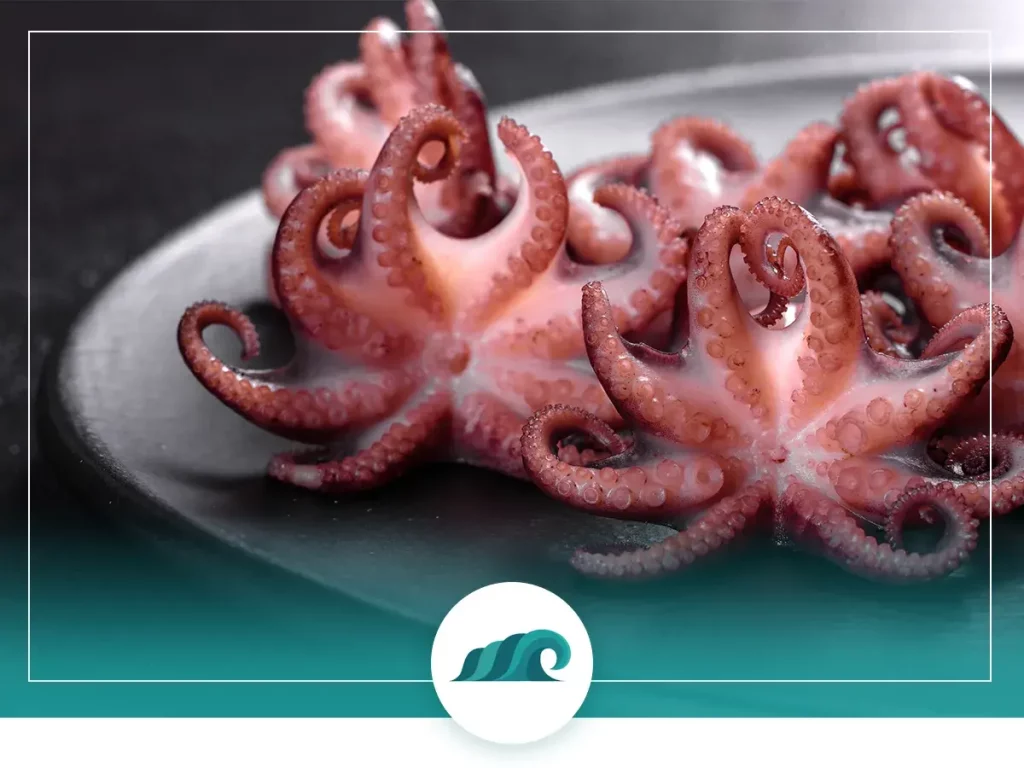
Once you’ve done the hard work and have got your prized octopus in hand, you’ll need to know how to prepare it for cooking. To get it ready to eat, you’ve got to tenderize the meat by slamming it with a rock or with a mallet a hundred times or so. This will release a white foam. Rinse it repeatedly in seawater until no more white foam is released. At this point, the meat should be completely tender and soft enough to pull apart by hand.
When people say they don’t like octopus because it’s too rubbery, they often don’t know how to tenderize it properly.
How to Cook Octopus?
There are several different ways to cook Octopus. Let’s take a look at some of the easiest and tastiest methods.
Grilled Octopus:
- Clean the octopus by removing and discarding the intestines, ink sac, eyes, and beak.
- If the octopus hasn’t been tenderized (see above), then you’ll need to slowly simmer it in braising liquid and herbs for about an hour – until the meat is soft and tender. You can use white wine, water, or broth. Some people also like to add a wine cork or two for added tenderness.
- If the octopus has already been tenderized, cut it into large serving pieces. Make sure the skin is dry and brush with olive oil, salt, pepper, and lemon zest.
- Heat a charcoal or gas grill to high heat. You’ll want to sear it so you get a nice brown crust.
- Grill until the outside is well seared (almost charred), and the interior is still soft and tender, about 4 minutes per side.
- Drizzle with olive oil and serve hot with slices of lemon, chopped parsley, and thinly sliced red onion.
- Enjoy!
Greek-Style Octopus in Wine (Krasato):
This traditional Greek taverna favorite is one of the most popular ways to cook octopus in Greece, particularly in the summer months.
- After cleaning the Octopus, place in a covered pot with a ½ cup of olive oil. Add several bay leaves and set the heat to medium. Allow the dish to simmer for around 20 minutes.
- Add 1 cup of dry red wine, and pepper, and a teaspoon of dried oregano.
- Simmer for 30 minutes or so, stirring every so often to make sure the liquid doesn’t evaporate. If it gets too thick you can add a bit more wine.
- Remove the lid and let the sauce reduce so its semi-thick, similar to a gravy or cream.
- Cut the octopus into serving-sized pieces, and serve with hot with some crusty bread and Greek salad!

